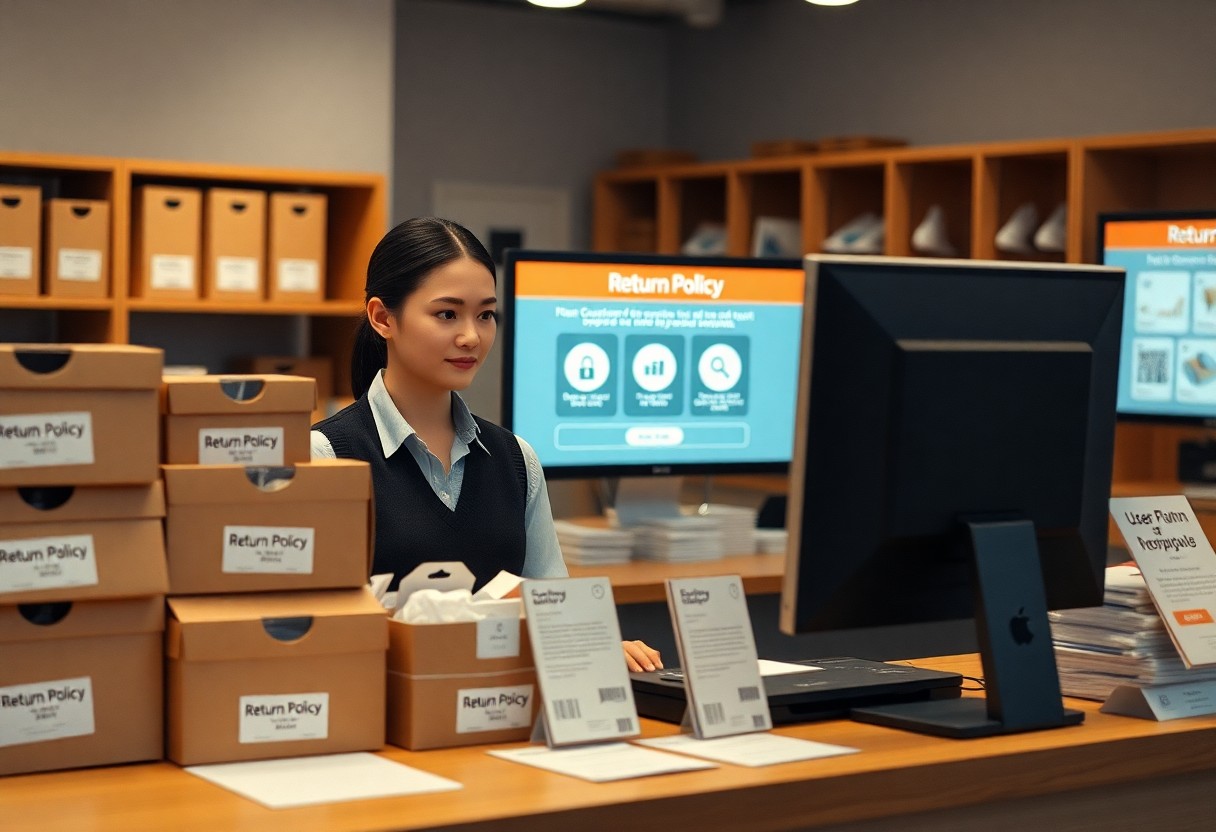With a clear understanding of the return policy at One Loved Babe, you can shop with confidence knowing your purchases are protected. Whether you’ve changed your mind or received a product that does not meet your expectations, this policy ensures you have options for a hassle-free return. It’s vital to familiarize yourself with the time limits and conditions for returns, as this can impact your experience. By knowing these details, you can avoid potential pitfalls and enjoy a positive shopping journey.

The Cornerstones of a Winning Return Policy
Emphasizing Customer Centricity
Customer centricity forms the backbone of a robust return policy, helping to cultivate trust and loyalty. By creating an easy-to-navigate process, you ensure that every step, from initiating a return to receiving a refund, is hassle-free. For instance, providing pre-paid return labels can significantly enhance the customer experience. Simplifying communication channels through various platforms, such as chat, email, or phone, enables you to address concerns promptly, reinforcing a positive relationship with your brand.
Your policy should also accommodate various customer preferences. Offering an extended return window during holidays or promotions demonstrates your understanding of seasonal shopping behaviors. Ensuring clarity in your return policy by explicitly stating time frames, conditions, and acceptable items minimizes confusion and empowers you to make confident purchase decisions.
Balancing Business Protection
While fostering customer loyalty is key, your return policy also requires a balanced approach to protect your business. Establishing guidelines that prevent abuse—such as marking items as final sale or limiting return windows for specific items—helps shield your revenue without frustrating your customers. Using analytics to identify patterns in return behavior can inform your strategies, allowing you to tighten policies on frequently returned products while being flexible with genuinely satisfied returners.
You can set clear parameters regarding the condition of returned items, putting an emphasis on maintaining product integrity. A system that assesses the wear and tear of returned items helps ensure that your inventory remains market-ready. This not only safeguards your bottom line but also upholds your reputation as a trusted retailer, enhancing long-term customer relationships.
Crafting Clear and Concise Return Guidelines
Defining Timeframes and Conditions
Return timeframes must reflect a balance between customer satisfaction and manageable logistics. Offering a 30 to 60-day window for returns is common and tends to enhance buyer confidence, as it allows ample time for reflection after purchase. Clearly outline conditions, such as the requirement for items to remain unused, tags attached, or packaging intact. Failure to specify these requirements can lead to confusion and dissatisfaction, ultimately reducing return efficiency.
Additionally, tailor timeframes based on product categories. For instance, seasonal items may necessitate shorter return windows, while importants like clothing might warrant longer periods. You might also consider implementing a tiered system that rewards loyal customers with extended return periods, fostering loyalty and encouraging repeat purchases while maintaining clear communication of these policies at checkout.
Transparency in the Return Process
Providing meticulous details about the return process enhances the customer experience and cultivates trust. Make the steps for initiating a return straightforward, and clearly define the methods customers can use, such as online return portals or in-store options. A simple return process reduces the likelihood of frustration, thus improving customer perceptions of your brand.
Include FAQs related to common return questions on your website, which will further clarify expectations for customers. Address potential concerns upfront, such as return shipping fees, time for refunds, and tracking returned items. Customers appreciate knowing exactly what to expect, and this level of transparency contributes to overall satisfaction and loyalty.
The Financial Implications of Flexible vs. Rigid Policies
Analyzing Impact on Sales and Customer Loyalty
A flexible return policy can significantly enhance customer loyalty, encouraging repeat purchases and brand advocacy. Customers often perceive brands with lenient return policies as more trustworthy, leading to increased sales; in fact, 67% of consumers check return policies before making a purchase. When a customer knows they can return a product easily, they are more likely to complete a purchase, as the perceived risk is minimized. The correlation between flexible returns and customer retention clearly demonstrates how adapting your policy can create long-term financial benefits.
On the flip side, rigid return policies may deter customers, leading to potential lost sales and damage to your reputation. A study showed that 86% of buyers are influenced by return policies in their shopping decisions. The current e-commerce landscape demands flexibility, and companies that fail to meet these expectations could face a decline in market share. Adapting your return policy to be more customer-centric, therefore, is not merely an operational adjustment but a strategic necessity for maintaining competitive edge.
Addressing Cost Management Strategies
Balancing the costs associated with flexible return policies is a challenge that requires careful consideration. While implementing a more lenient policy may lead to increased returns and associated logistics costs, the potential for higher sales can offset these expenses. You might consider strategies such as integrating return shipping fees into product pricing or offering restocking fees to soften the financial impact. Additionally, improving returns processing efficiency can minimize resource allocation and maximize operational performance.
Streamlining the returns process through technology can significantly reduce operational costs associated with returns. Investing in software solutions that automate return handling and analysis can help you identify trends and areas for improvement, ultimately optimizing your inventory and reducing overhead. Employing data analytics ensures you track return rates effectively, allowing you to adjust policies proactively and manage costs without sacrificing customer satisfaction.
Real-life Success Stories of Brands with Exceptional Return Policies
Case Study: How a Leading Retailer Boosted Retention
One notable case is that of a leading retailer who revamped its return policy to allow for hassle-free returns within a 90-day window, with free shipping on returns. This strategic shift resulted in an astonishing 25% increase in customer retention rates over the next year. By eliminating the ambiguity and stress typically associated with returns, they fostered a sense of trust and loyalty among customers. Surveys indicated that over 70% of shoppers felt more confident purchasing when they knew they could easily return unwanted items.
Additionally, the retailer implemented a streamlined online return process, integrating user-friendly features such as label printing and instant refund notifications. Customers reported reduced time spent on returns, which in turn enhanced their overall shopping experience. This led to a 40% growth in repeat purchases, proving that a well-designed return policy can serve as a valuable marketing tool that nurtures ongoing customer relationships.
Lessons from E-commerce Giants on Handling Returns
Analyses of major e-commerce players like Amazon and Zappos reveal a common theme: prioritizing customer experience during the return process translates to lasting loyalty. Zappos, for example, promotes a 365-day return policy and free shipping, demonstrating their commitment to customer satisfaction. This approach has played a vital role in establishing their brand identity, with average order values increasing significantly as consumer confidence grows. Customers are not just buying products; they are buying peace of mind.
Furthermore, these giants have invested in automated systems that track returns closely, allowing them to identify patterns in what customers are returning. Understanding such trends enables brands to enhance product descriptions and improve quality, ultimately reducing the likelihood of returns. This data-driven approach highlights how handling returns effectively can create a cycle of continuous improvement and customer loyalty.
E-commerce giants show you that a robust return policy is not merely about accepting returns; it reflects a deep understanding of customer needs and behaviors. By investing in clear communication and making the return process seamless, you can enhance the customer experience, turning potential frustrations into opportunities for growth and retention. High-profile examples demonstrate that treating returns as a positive interaction rather than a nuisance directly contributes to building brand loyalty and can even justify premium pricing for your products.

The Future of Return Policies in a Digital Age
Leveraging Technology to Streamline Returns
Innovations in technology are transforming how return policies function, significantly enhancing both the customer experience and operational efficiency. You can now utilize AI-driven tools that analyze return data to identify patterns, helping to reduce return rates by addressing common pain points in product design and descriptions. For instance, augmented reality (AR) technology allows customers to virtually “try on” products before purchasing, reducing the likelihood of regret and subsequent returns.
Moreover, integrating mobile apps with your return process makes it simpler for customers to initiate returns and receive instant feedback. Offering self-service options through mobile platforms empowers customers to manage their returns without the need for lengthy phone calls or waiting periods. This level of convenience can be a game changer, driving loyalty and encouraging repeat business.
Anticipating Consumer Trends and Expectations
Your return policy must evolve alongside shifting consumer expectations. Today’s customers prioritize seamless experiences and transparency over all else. Keeping up with trends such as the increasing popularity of same-day returns or shipping label printing at home ensures that your policy remains competitive. Studies show that nearly 90% of consumers consider a flexible return policy when making purchasing decisions, indicating your returns process can greatly influence their choice of retailer.
Additionally, consumers are now more aware of environmental impacts, with many preferring brands that implement sustainable return practices. Offering eco-friendly packaging for returns or collaborating with local charities to reduce waste can enhance your image while meeting the growing desire for sustainability.
The growing trend for personalization in shopping experiences extends to returns as well. Tailoring your policy based on purchase history or customer feedback can significantly improve satisfaction levels. By leveraging data analytics, you can anticipate individual customer preferences and adjust return options accordingly. Consistently seeking consumer input and adjusting your policies can foster a strong rapport with your audience, ensuring they see value in your brand throughout their shopping journey.
Final Words
Drawing together your experiences with the return policy at One Loved Babe, it’s clear that understanding the guidelines is imperative for a smooth shopping experience. You should familiarize yourself with the time frame for returns and the conditions necessary for items to be eligible. This knowledge empowers you to make informed purchasing decisions and helps you manage any return processes efficiently.
By knowing what to expect, you can shop with confidence at One Loved Babe. Should you find that a purchase doesn’t meet your expectations, being aware of the steps involved in returning an item allows you to resolve the situation quickly. This approach enhances your overall satisfaction and reinforces your trust in the brand, allowing you to focus on enjoying your shopping experience.
FAQ
Q: What is the return policy for One Loved Babe?
A: One Loved Babe offers a 30-day return policy for unworn and unwashed items. Customers can return items for a full refund or exchange within this period. Items must have all original tags attached.
Q: How do I initiate a return for my One Loved Babe purchase?
A: To initiate a return, visit the One Loved Babe website and log into your account. Locate your order and select the items you wish to return. Follow the instructions to print a return label and package your items securely.
Q: Are there any items that cannot be returned?
A: Yes, items such as final sale items, gift cards, or any items marked as non-returnable cannot be returned. Please check the product description for return eligibility before making a purchase.